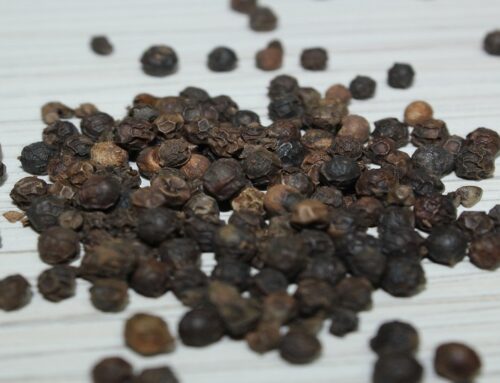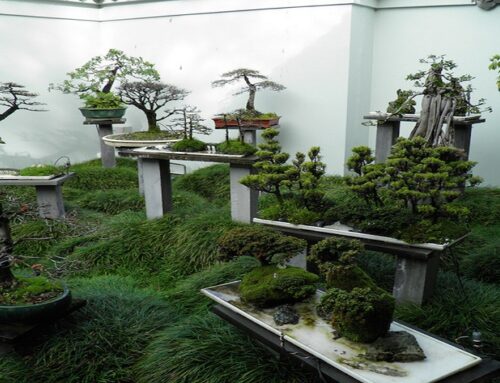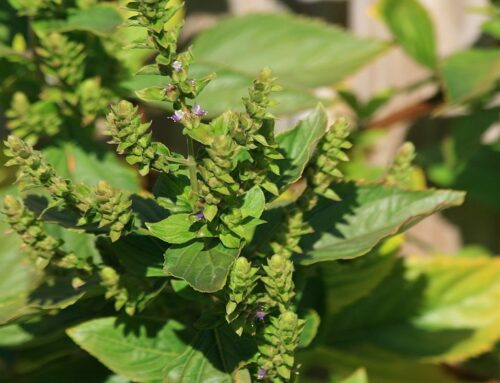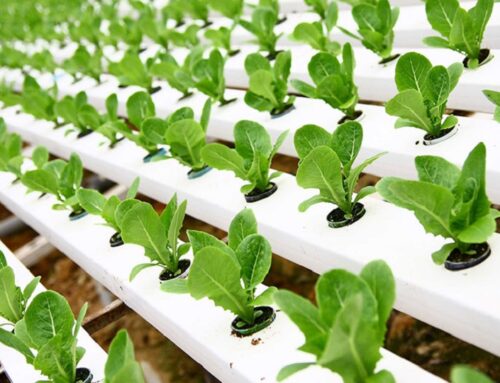Here below is a brief description of growing practices for tamarinds.
Site Selection
Open field cultivation is recommended. Container growing is not suitable for tamarind as they subsequently grow into large trees. Open, spacious, sunny location is best suitable for growing tamarind plants.
Climatic Requirements
Semi-arid tropical climate is best for the commercial cultivation of tamarind. Tamarind can be grown in any areas where the temperature reaches 46°C maximum and 0°C minimum. Average rainfall requirement is 500–1,500mm. The optimum altitude required for tamarind cultivation is 1,000m above MSL (mean sea-level).
Soil Requirements
Tamarind can be grown in all types of soils provided that proper drainage is there. However, tamarind plants grow well in well-drained deep loamy or alluvial soils. Tamarind can be grown in poor soils such as rocky or porous soils too but soil fertility should be replenished time to time. Tamarind plants prefer slightly acidic soils and are tolerant to saline and alkali soils.
Cultivars and Varieties
- Indian Types -PKM 1:-Early variety; average yield is 263kg pods/tree; pulp content 39%.; can yield up to 26 tons of pods/ha if transplanted at a spacing of 10m × 10m
- Urigam:- A local variety; very long pods; sweet pulp
- Other Indian varieties:-Hasanur,Tumkur Prathisthan, DTS 1, Yogeshwari
- Indian types have longer pods with 6 – 12 seeds
- Asian Types -Makham Waan is a popular variety in Thailand
- In Africa and Asia, the tamarind tree reaches its maximum height of 80 feet
- American Types -Manila Sweet is a popular variety in USA
- in Americas, the tree seldom reaches more than 15 to 25 feet in height.
- West Indies and African Types -the West Indian types have shorter pods containing only 3 – 6 seeds
- In Africa and Asia, the tamarind tree reaches its maximum height of 80 feet
Depending upon the presence of sugar content in the pulp, tamarinds may be categorised into sweet tamarinds and sour tamarinds.
Propagation
Seed propagation, layering, grafting and budding are practiced for propagating tamarind plants.
Nursery Production/Raising of Seedlings
Nursery beds are prepared and seeds are directly sown at a spacing of 20–25cm apart during March-April.
Seed germination may be enhanced by boiling them in hot water for a few seconds. Dipping seeds in 10 per cent cow urine or cow dung solution for one whole day just before sowing may protect them from insect-pest and fungal infestations in the field.
Irrigation is done soon after sowing and seeds start germinating within a week. Seedlings are regularly watered until they reach transplanting age. Seedlings may be raised in polythene bags also. Generally two year old seedlings are transplanted in the main field at the beginning of rainy season.
Grafting and Budding
Since true-to-type plants cannot be produced by seed propagation, grafting and budding are practiced for large scale propagation of tamarind plants. Approach grafting and Patch budding are proved to be quite successful.
Air Layering
Air layering may also be practised for propagating tamarind plants. In air layering, shoots treated with IBA (Indole Butyric Acid, a growth regulator)@4000 ppm.
Planting
Ideal time for planting tamarind seedlings in the main field is June–November. Pits of 1m × 1m × 1m size are dug in the field at a spacing of 10m × 10m. Seedlings are placed in the pit without disturbing the root ball and pit is then covered with a mixture of farmyard manure @ 15kg/pit and top soil.
Staking of Young Plants
Support is necessary for growing young plants until they are strong enough to support themselves.
Frost Injury
Growing tamarind trees are very susceptible to frost and hence need to be protected from severe frost. Large mature trees are very hardy.
Watering
Regular watering @once in 7 days is done until plants get established in the field. Established tamarind plantation may not require regular watering since tamarind is a plant of semi-arid regions. Hence tamarind trees can withstand drought conditions fairly well. Overwatering tamarind plantation must be avoided at any cost as the growing plants may not survive well in soggy waterlogged soils.
Fertilizer Application
Established tamarind plantations may not require regular fertilizer application. However young growing trees should be fertilized regularly until they get established in the field. According to some researchers, the recommended rate of nitrogen, phosphorous and potassium requirement in countries such as India is @200:150:250 g of NPK per tree per year. Application of 25 kg of FYM (farm yard manure) and 2 kg of Neem cake per tree per year along with NPK fertilizers enhances productivity and production.
Insect Pests
Leaf caterpillar (Achaea janata) and Storage beetle (Pachymeres gonagra) may be a problem. But these can effectively be controlled by the application of a suitable insecticide. Other insects found affecting tamarind plantations in India are mealybugs, aphids, white flies, thrips and a variety of scales.
Storage Pests
Different kinds of weevils and fruit borers are found infesting the ripening pods on the trees as well as stored fruits.
Diseases
Tamarind plants may be susceptible to a fungal infection called powdery mildew which can be controlled by spraying a suitable fungicide at the recommended rate.
Pruning
Two types of pruning are practised in tamarind plantation. There is pruning of young growing tamarind trees and then pruning of established plants which is called maintenance pruning. While pruning young plants, 3-5 well-formed healthy branches are allowed on the young, growing tamarind tree so that a well-structured canopy is developed over a period of time. Maintenance pruning is required to remove all distorted, diseased and unhealthy branches from the established trees. Pruning a growing tamarind plant is essential for maintaining optimum production throughout its economic life.
Aftercare
Established tamarind plantation may not require regular care. Growing tamarind plants need regular care. Pruning is an ongoing procedure. All unwanted growth and sprouts are removed as and when required.
Weeding
There are hardly any weeds that are found affecting tamarind plants. Weeding may be necessary during initial growth of the plants. Established tamarind plantation hardly requires any weeding.
Harvesting
Seedling plants start yielding in 6-8 years after planting. Grafts and budded plants start yielding from 4th year onwards. Harvesting in India and surrounding regions may be done during January–April. In USA and West Indies fruits ripen during April to June and harvesting may be done during this period.
Ripened pods stay on the tree even after 6 months of reaching ripening stage. In India harvesting may be done by shaking the branches to make the ripened pods fall off naturally from the trees or the grower waits until the ripened pods fall off naturally from the trees and then gather them from the ground. Harvesting with poles is not recommended as it will damage flowers, immature fruits and tender leaves.
For processing purposes, harvesting may be done by gently pulling the pods away from the stalk attached to it.
For fresh markets, pods may be harvested along with stalks by clipping them from the branches.
Yield
Average yield is 26 tons of pods/ha per year in commercial production practices. It is estimated that a well-grown healthy tamarind tree annually produces approximately 330 to 500 lbs (150-225 kg) of fruits.
Fruit Constituents
- Fruit Pulp -30 to 55%
- Shells and Fiber-11 to 30 %
- Seeds-33 to 40%
Home Storage Instructions
Pods are shelled, pulp is extracted after removing seeds and then pulp is layered with sugar. This pulp-sugar mixture is then pressed into tight balls and covered with a white muslin cloth and kept air tight containers in a cool, dry place. Sugar is used as a preservative here.
Storage for Processing Purposes
Pods are shelled, pulp is extracted after removing seeds and then pulp is layered with sugar in barrels and covered with boiling syrup. Sugar is used as a preservative here.
For Long Term Storage
For long term storage of tamarind pulp, the layers of pulp are first steamed and then sun-dried for several days.
Intercropping in a Tamarind Plantation
Since a tamarind plantation comes in yield only after four years of planting, intercropping may be practised during initial four years. Peas and beans, seasonal vegetables, leafy vegetables, sesamum and sorghum may be considered as suitable intercrops.
Economic Life
A healthy well-grown tamarind plant has an economic life of up to 50 years. After that the tree continues to live, in some cases up to 150 years, but production and productivity declines considerably.
We have a book on ‘Tamarind‘….
Check out our publishing services here…
We publish top quality videos on various ‘Food & Agriculture’ topics. You may subscribe our video channel here…






